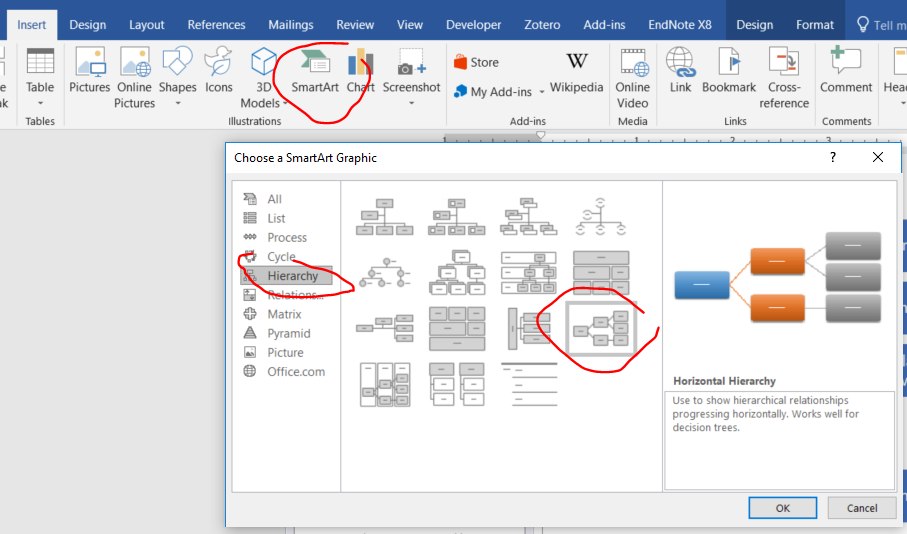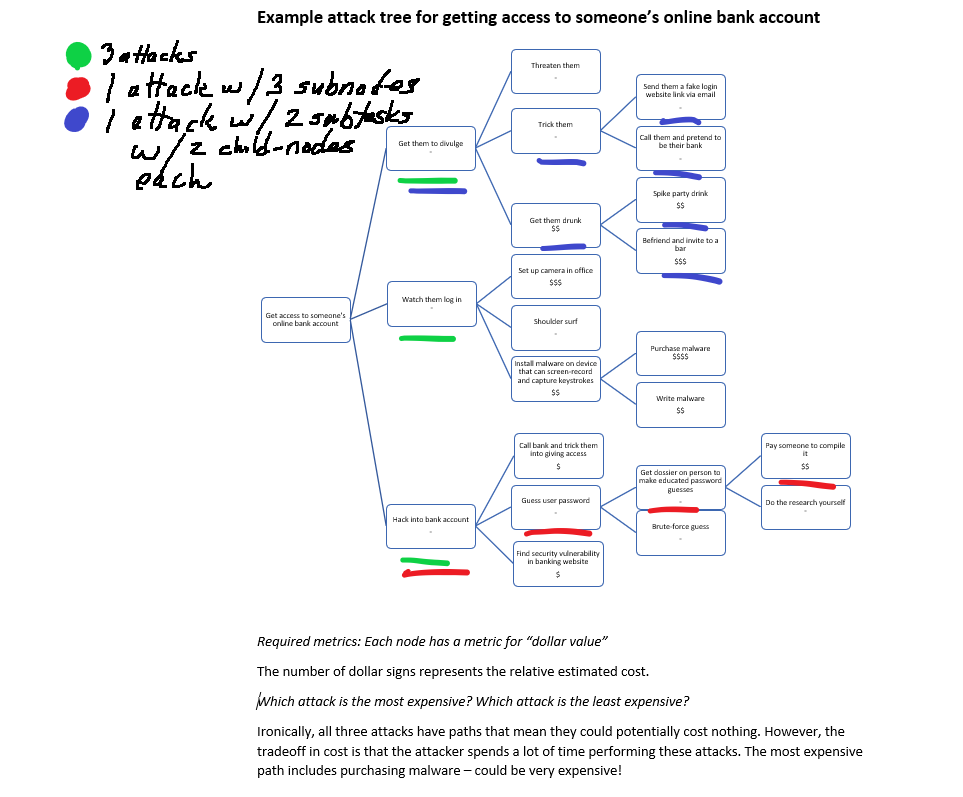Lab: Threat Modeling with Attack Trees
Practice with attack trees
Note: You can do this assignment alone or in groups of 2–3.
Assignment Description
In this lab, you will create attack trees for different attacker goals to help you systematically think through various attacks. You can represent your attack tree graphically (like those depicted in Schneier, “Secrets and Lies”, Chapter 21), or as a numbered list (e.g., 1, 1.1, 1.2, 1.2.1, 1.3, …). The below questions are in part from Cryptography Engineering, 2nd edition, by Ferguson, Schneier and Kohno (2010).
You are required to include certain metrics for each attack tree. Refer to Schneier chapter 21 for examples of including metrics on attack trees. You do not need to do research to choose metric values for your nodes – but your metric value choices should still be loosely justifiable. The main point of adding metrics is to give the attack tree creator a way to sort, prioritize, etc the attack vectors, however they want to do that.
Note: I recommend using Microsoft Word’s SmartArt function and the “hierarchy” template to quickly generate an attack tree from an outline. You can enter multiple lines into one box by using shift+enter.

Minimum requirement for each attack tree:
- Have at least three different attacks (second-level nodes).
- Have at least one attack with a path at least three subnodes deep.
- Have at least two attacks that have subtasks with at least two immediate children.
- Answer all questions. Defends rankings and answers. E.g., “We think that ____ would be the easiest because _____, whereas _____ would not be as easy because _____.”
-
Create an attack tree for stealing a car, and show your work. Which attack is easiest for the attacker? Which attack poses the least amount of risk for the attacker?
Required metrics: Each node has metrics for both “ease” and “risk.”
-
Create an attack tree for getting into a gym without paying. Which attack do you think is most likely?
Required metrics: Each node has metrics for “likelihood” (e.g., very unlikely to very likely, or your could state a probability as a percentage).
-
Create an attack tree for reading someone else’s email. Assign a difficulty level to each attack node, per ‘Schneier Chapter 21’. Which attack requires the least sophistication on the part of the attacker? Which attack requires the greatest expertise? What types of attackers do you think would use each attack?
Required metrics: Each node has a metric for “difficulty”, “sophistication”, and “expertise.”
Example
Example 1. Create an attack tree for learning someone’s online banking account username and password. Assign dollar values to each attack node, per ‘Schneier Chapter 21’. Which attack is cheapest for the attacker? Which attack is most expensive?
Example Required metrics: Each node has a metric for “dollar value”.

Deliverable
Submit a PDF document on Canvas with one page for each of the attack trees along with answers to the associated questions. If working as a team, join a “group” on Canvas, and make only one submission per team. To do this, on the course page in Canvas, select “People” and the “Lab: Threat Modeling” tab. Then, drag the names of class members on the left into one of the available groups.